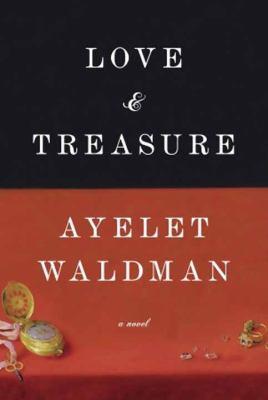
Love and treasure
Available Copies by Location
| Location | |
|---|---|
| Community Centre | Available |
Browse Related Items
- ISBN: 1628991178
- ISBN: 9781628991178
- Physical Description 559 pages.
- Edition Center Point large print ed.
- Publisher Thorndike, Me. : Center Point Large Print, 2014.
Content descriptions
| General Note: | GMD: large print. |
| Immediate Source of Acquisition Note: | LSC 51.95 |
Series
Additional Information

New York Times Review
Love and Treasure : A Novel
New York Times
May 4, 2014
Copyright (c) The New York Times Company
IN 2005, the settlement of a notorious case of postwar liability took place in a federal court in Florida. Sixty years previously, the so-called Hungarian Gold Train had arrived near Salzburg, Austria, bearing property requisitioned by the Nazis from Hungary's estimated 800,000 Jewish citizens. Making its way to Germany as the Allies closed in, the train was intercepted by the Americans. Some of its cargo - jewelry, glassware, carpets, bed linen, cutlery, furs, furniture, gold coins, watches and much else from households whose occupants had vanished into the concentration camps - was subsequently commandeered by the generals working on the Marshall Plan, who needed to furnish their headquarters. Numerous items were irretrievably lost, never to be seen again by their rightful owners or by their owners' heirs. It would take more than half a century for Hungarian survivors of the Holocaust to settle a lawsuit that eventually granted $21 million as compensation to a number of Jewish social service agencies. Ayelet Waldman's new novel, "Love and Treasure," places the Hungarian Gold Train at the heart of a multigenerational tale largely set in Salzburg in 1945 and in Budapest, both in the present and in 1913. Crucial to its plot is an enameled pendant, intricately worked in the design of a peacock, unusually colored in purple, white and green. Waldman skillfully interweaves this striking and enigmatic object - a symbol, as the book progresses, of fatal bad luck - into an ambitious sweep of history, setting the loss of millions of human lives against the pendant's own poignant, improbable survival. Jack Wiseman, a retired classics professor, is dying of cancer at his home in Maine. His granddaughter, Natalie, fleeing the abrupt end of her marriage, spends his final days with him and listens to his reminiscences of World War II. Jack tells an intense, heartfelt tale of himself as a young Army officer falling in love with Ilona Jakab, a Hungarian refugee and survivor of Auschwitz and Dachau, in "the picturesque corpse" of Salzburg in the immediate aftermath of the war. But his memories are shadowed by his guilt at the illegal removal of an item of jewelry, the only tangible trace of his lost lover. Natalie's promise to return the pendant leads her to wintry Budapest and Amitai Shasho, an Israeli dealer who tracks down artworks and restores them to the descendants of their former owners, at a hefty commission. Providentially, Amitai is on a treasure hunt of his own - for a Surrealist painting by a lost Hungarian artist that features the image of a woman with the head of a peacock. In the novel's final, twisty section, Waldman has great fun with the narrative of a pompous, libidinous psychoanalyst in seemingly idyllic, assimilated pre-World War I Budapest. The analyst's patient, Nina S., is a spirited intellectual rebelling against her parent's wishes to settle her into an arranged marriage. She and a suffragist friend, a dwarf named Gizella Weisz, become involved with a group of anarchists, with catastrophic results. Waldman sustains her multiple plot lines with breathless confidence and descriptive panache, fashioning complex personalities caught up in an inexorable series of events. Less satisfactorily, she never fully explains the provenance of the painting Amitai is hunting, and with the exception of Jack and Ilona - he acting from genuine affection and she from expedience - the love scenes are clichéd. Elsewhere, Waldman's accounts of the performing Lilliput troupe experimented on by Dr. Mengele at Auschwitz are well-documented: The reader can assume that the character of Gizella is based on one of its members. Like other recent novels (Nicole Krauss's "Great House," Simon Mawer's "The Glass Room"), Waldman's book employs a talismanic object as a silent witness to history's atrocities. Perhaps because of this, despite the novel's admirable narrative velocity, the quietest moments of "Love and Treasure" are its most powerful. CATHERINE TAYLOR is the deputy director of English PEN.


